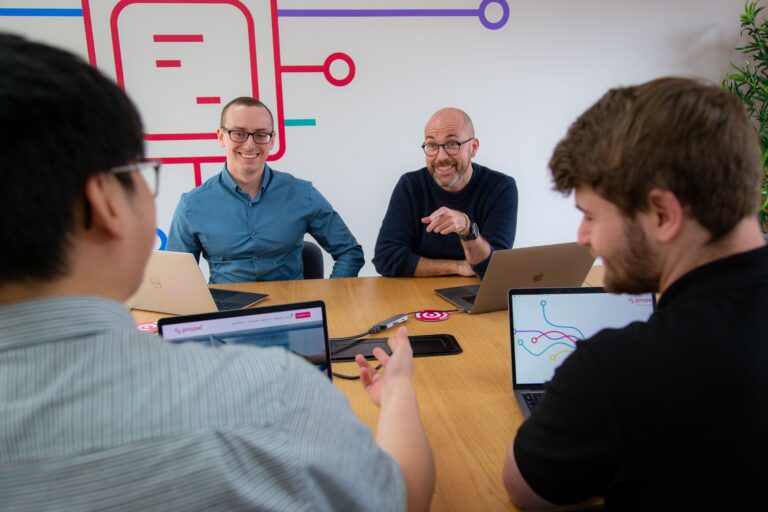The hiring landscape remains challenging; 20% of employees are currently thinking about leaving their current employer, a third of candidates leave within one year, whilst 50% of candidates have multiple job offers to choose from. Market demand is still high, and the best talent has plenty of choice.
Critically, among the primary reasons for turning down a job offer, are poor experiences during the recruitment process, and lack of an obvious commitment to diversity and inclusion. Developing an inclusive recruitment process is not only key to increasing diversity across the workforce, but also to attracting and retaining the best talent.
Where do most companies struggle with inclusive recruitment?
Data shows organisations across a range of sectors struggle in several key areas; the IRD is based on the results of fifty academic studies, covering the full spectrum of diversity and assessed inclusive recruitment maturity at every step of the recruitment process, from role definition to offer and on-boarding.
The research suggests that most organisations perform well toward the final stages of the recruitment process. This includes communicating the job offer and talking to and providing feedback to unsuccessful candidates. However, on average, organisations perform poorly at the earlier stages of recruitment such as developing the advert, shortlisting, and engaging employee resource groups (ERGs). Even those with ERGs are not good at leveraging them to connect with the community.
Unsurprisingly, the stages in the recruitment process where human input is the strongest, see the most biases creep in. This includes the person with the final hiring decision, how the panel prepares for the interview, how the panel is selected, and the process for defining the role criteria. These are the areas where there’s significant scope for ‘interpretation.’
How can companies improve their inclusive recruitment?
Improving inclusive recruitment begins by developing a clear recruitment strategy. This strategy should include clear guidance for developing roles and responsibilities, and actions hiring managers and HR members should take at every step of the recruitment process.
Minimising or ideally eradicating bias, though bias interrupters, are an important part of an inclusive recruitment process. They mitigate behavioural and systemic unconscious biases by ensuring reflection and evidence-based assessment. They also provide hiring managers with noticeably clear actions, and so are easy to implement.
For example, having a rule where no one speaks for a minute after the interview. Particularly if a leader comments about the interviewee following the interview, this can influence other panel members perceptions. Implementing this minute provides time for fair reflection.
Similarly, asking interview questions in the same order, ensuring the person asks the same questions, and setting a scoring matrix ensures all candidates are assessed against the same standards. The scoring matrices should be agreed upon in advance, for example, deciding what a one out of five score or a five out of five score equates to.
Including two people at each decision step makes the process more evidence-based and mitigates individual biases. With two people, decision makers will be required to explain why they have made the decision, leading to more accurate assessment.
Setting up weekly meetings to evaluate shortlists among a rotating group of individuals offers broader perspective. Ensuring departments, and varied employee levels are included, provides a greater diversity of decision making in the recruitment process.
Educating hiring managers on the why, what, and how of inclusive recruitment is also essential. Certain organisations seem to think inclusion is something everyone should know inherently but of course, this is not the case. Without clear guidance, hiring managers often revert to the interview behaviours they know, rather than applying inclusive methods.
We know the opposite of this is true. Organisations that train hiring managers perform better on inclusive recruitment, while those with an inclusive recruitment policy are five times more likely to train their hiring managers on inclusive recruitment practices than those without.
Finally, embedding accountability ensures checks and balances are in place to identify decision points where behavioural unconscious biases could be introduced. This includes monitoring how job descriptions are written, checking the language against bias identifiers, and tracking the diversity of candidates through the recruitment funnel.
The latter means organisations can see who is and who is not applying to roles and enables organisations to implement targeted interventions where required. For example, which departments are doing well and why, and where in the recruitment process diverse candidates are being lost. Tellingly, organisations that track candidate diversity score higher on diversity maturity scores.
For many organisations, convincing candidates to provide data about themselves can be challenging; it requires a level of visible commitment from the organisation. Candidates need to trust the information is being used in the interest of inclusivity and so these commitments should be visible on company websites and conveyed by hiring managers in the recruitment process.
Achieving inclusive recruitment is an investment; one that requires both time and money. But it is an investment that reaps dividends. Companies get their pick of top talent, that talent stays, and engagement across the organisation increases. The bottom line is positively affected at the same time as creating a fairer, more equitable jobs landscape for all.
*Data from Odgers Berndtson’s Inclusive Recruitment Diagnostic (IRD)









